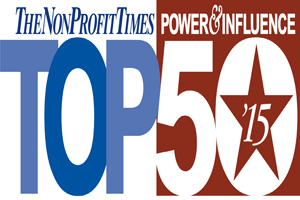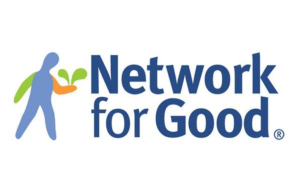Volunteers from around the nation helped to build a new playground in Philadelphia during the spring of 1997. As part of the Presidents’ Summit For America’s Future, a who’s who of national figures took part in service projects all along Germantown Avenue: four living presidents, then-Vice President Al Gore, former first lady Nancy Reagan, and retired Gen. Colin Powell, among others.
The presidents and the media spotlight left the Nicetown neighborhood long ago. That playground has been refurbished three times, not with the hoopla of a national summit or out-of-towners, but by local volunteers. It begs the question: How often does volunteerism likewise need some sprucing up? How often must volunteerism be replenished, given a proverbial fresh coat of paint? Does it need some occasional checkup?
With the hindsight of 12 years, leaders in the nonprofit sector call the Summit a watershed event for volunteerism and America’s youth, bringing more attention to their plight, while some describe it as merely a multimillion-dollar photo op.
The playground was used as a rallying point for people at the summit, said Rebecca Rimel, president of the Pew Charitable Trusts in Philadelphia, among the funders of the summit. “It’s wrong to think volunteers can address some of our most difficult problems alone. Hopefully everyone understands it takes a community,” she said.
That the playground has run into disrepair multiple times demonstrates two things, according to Robert K. Goodwin, former president of the Points of Light Foundation (PoLF), a Summit coordinating organization which has since been merged with the HandsOn Network and been renamed the Points of Light Institute. “One, there remains a cadre of willing volunteers to ensure there is this alternative; and, second, the larger community issues like crime and unemployment need to be addressed by government, the private sector and community because each of these realities have an adverse effect on the total community life,” he said.
During a visit to the playground in late July, The NonProfit Times observed an abandoned car in the street adjacent to the park, up on blocks and surrounded by yellow police tape. There was no shortage of litter strewn about and some graffiti but there was also several dozen children using the park and playground. It only took one day for countless volunteers from across the country to fix up the playground, but the challenge is to maintain community volunteers.
President Barack Obama’s national call for public service has focused the kind of attention on volunteerism probably not seen since the Presidents’ Summit. But every president for the past few decades has put some type of focus on public service.
Twelve years after the Presidents’ Summit, another playground nearly 3,000 miles away in San Francisco kicked off another volunteering movement. First Lady Michelle Obama, California First Lady Maria Shriver and volunteers constructed a playground at Bret Harte Elementary School this past June to launch the United We Serve Initiative, the 81-day campaign calling on Americans to volunteer.
“We literally have volunteers that come and say, ‘I’m personally answering the President’s call,'” said Michelle Nunn, CEO of Points of Light Institute and co-founder of HandsOn Network. It might be a new call to service for some, but Nunn explained this current fervor from ServiceNation and United We Serve is another peak in the larger service movement landscape.
“The passage of the Serve America Act and ServiceNation was really built upon the foundational leadership that emerged during that 20-year period,” said Nunn.
A caucus of living presidents can be a powerful message, whether it was a decade ago or a month ago. A video of former presidents encouraging public service was played during this year’s Major League Baseball All-Star Game in St. Louis. That the Obama administration was able to coordinate such a gathering was incredible, said Alan Khazei, founder and CEO of Cambridge, Mass.-based Be the Change, Inc. “I hope it’s not the last time all living presidents will be promoting service together. That’s powerful,” he said.
“It’s best to look at the summit as a step on the route, rather than significantly different from what the current administration is doing,” said Leslie Lenkowsky, director of graduate programs at The Center on Philanthropy at Indiana University and CEO of the Corporation for National and Community Service (CNCS) from 2001 to 2003.
“There are real limits to what the White House or big leaders like Powell can do. The tradition of American volunteerism is a grassroots tradition. It’s got to take hold locally,” Lenkowsky said. National figures such as Powell or celebrities “are useful in providing a kind of socially-acceptable face, or encouraging people to do it,” he said, but don’t necessarily get people to volunteer. “What we do know is, while presidents and leaders like Powell can add a nice gloss to the idea of volunteering, ultimately that has a fairly minor effect that gets people to volunteer or don’t,” he said.
Each administration has historically somehow adopted volunteering as a cause or important focus, and put their own stamp on it, said Sarah Jane Rehnborg, associate director for planning and development for the RGK Center for Philanthropy and Community Service at the LBJ School of Public Affairs in Austin, Texas. Expect some personalizing, or “branding, if you will,” she said, about what service is about with each new administration.
One of the differences this time around, said Rehnborg, who was a delegate to the 1997 summit, is that Obama has recognized at a fundamental level the power of volunteers. The President’s Summit was “a powerful call for helping our country’s disadvantaged youth,” said Judy Vredenburgh, CEO of Philadelphia-based Big Brothers Big Sisters (BBBS). “That was a huge turning point for the country to put a spotlight on pressing problems that had been there,” she said, but the attention had not followed until the summit and has been building ever since.
The summit was a “great galvanizer” and “catalyst” that initiated a lot of attention, said Vredenburgh, who in 1999 succeeded Thomas McKenna as CEO. Big Brothers Big Sisters hitched its wagon to the summit’s theme of youth service and established a goal of doubling the number of children it serves. At the time, about 100,000 children were served by BBBS and today the figure is more like 250,000.
People versus cash
The push for volunteerism from George H.W. Bush, and now Obama, has been helpful to the growth of Big Brothers’ one-to-one relationships, but, of course, growth in funds is nearly as important to be able to recruit, screen and match volunteers, Vredenburgh said.
“Demand for our services has shot up tremendously,” she said, and interest by volunteers also has increased. “That’s all good except the fundraising environment is extremely difficult,” she said, making the need for more funds along with more volunteers critical. She estimated it cost $1,000 to $1,200 to support a long-term strong relationship for a child.
One of the goals of the Service Nation movement is to nurture a culture of service to the point where, one day, people will ask each other where they serve when they meet, Khazei said. Be the Change has pushed both stipended service and volunteerism, Khazei said, to reinforce each other. “What we’ve tried to do is bring those two pillars together,” he said, going in hand-in-hand to create more opportunities. He estimates that every stipended AmeriCorps volunteer leverages at least 25 unpaid volunteers.
“The worlds of service and social entrepreneurship have become intricately connected,” Khazei said. People who do national service often get inspired to start an organization and fix a problem — like a Teach For America volunteer starting a charter school after their tenure in the program — and they usually turn to groups like AmeriCorps for “people power” in getting started.
America’s Promise Alliance (APA) was born from the Presidents’ Summit call to focus on the country’s youth. APA President and CEO Marguerite Kondracke said the organization in the beginning relied heavily on the strength of Powell as its chairman.
“What it had to learn was to build the body of work to a point so the work itself stood on its own merit and wasn’t just dependent on a strong personality and a charismatic leader,” she said.
APA focused on the mission of Five Promises — guidance from caring adults, creating physically and emotionally safe environments, a healthy start both physically and psychologically, an effective education and an opportunity to serve others.
APA originally planned to sunset three years after the Summit in 2000. But, Kondracke explained that the executive leadership and board members concluded that there was more work that needed to get done around the Five Promises and decided to continue.
Kondracke said when she arrived at the organization in 2004, “there was a real, brief struggle for survival — to say ‘Is our work still relevant?’ And if not, let’s call it a great run. But if so, let’s roll up our sleeves and make this count for something.”
APA made the decision to focus more on the strength of the alliance itself and its more than 350 partner organizations. The organization even changed its name, from America’s Promise — Alliance for Youth to America’s Promise Alliance, to emphasize the power behind the network of partners.
“We see ourselves as a convener, a catalyst for action and we help our partners and communities that focus on the measurable goals,” said Kondracke. Along with the original Five Promises, the organization wanted to focus the nation on high school dropout prevention, since one in three teenagers will fail to graduate nationwide. The next campaign phase would set a national goal to cut the dropout rate in half, which major APA partners, such as City Year and United Way, have folded into their own individual missions. “You are going to get a lot of traction for your issue if major organizations adopt that commitment and make it a part of their daily work,” she said.
“From the very beginning, we [APA] partnered with businesses, the faith community, elected officials and large nonprofit partners. And I think the hope is that if we have mega problems, it will take a mega community to solve those problems,” said Kondracke, a notion echoed by other nonprofit leaders.
Nunn thinks the volunteerism movement is shifting direction toward strategic volunteering with quantifiable goals. It’s not good enough to tell volunteers how many hours they dedicated, nonprofits should gauge the “individual impact of volunteers that basically moves the needle on significant national challenges,” she said.
“We will continue to encourage people to follow their passions and volunteer in ways that make sense, but we want to do a better job of telling the story about how service can drive impact in a scaled way when you accumulate and collect the results and share the facts,” said Nunn.
To Goodwin, a community is an ecosystem like any other. “You cannot isolate one aspect of that community and place too much of a burden for holistic change on one simple component,” he said. “The real question is not how much better are things because of the work of volunteers, the real question is how much worse would they be without them.” NPT












